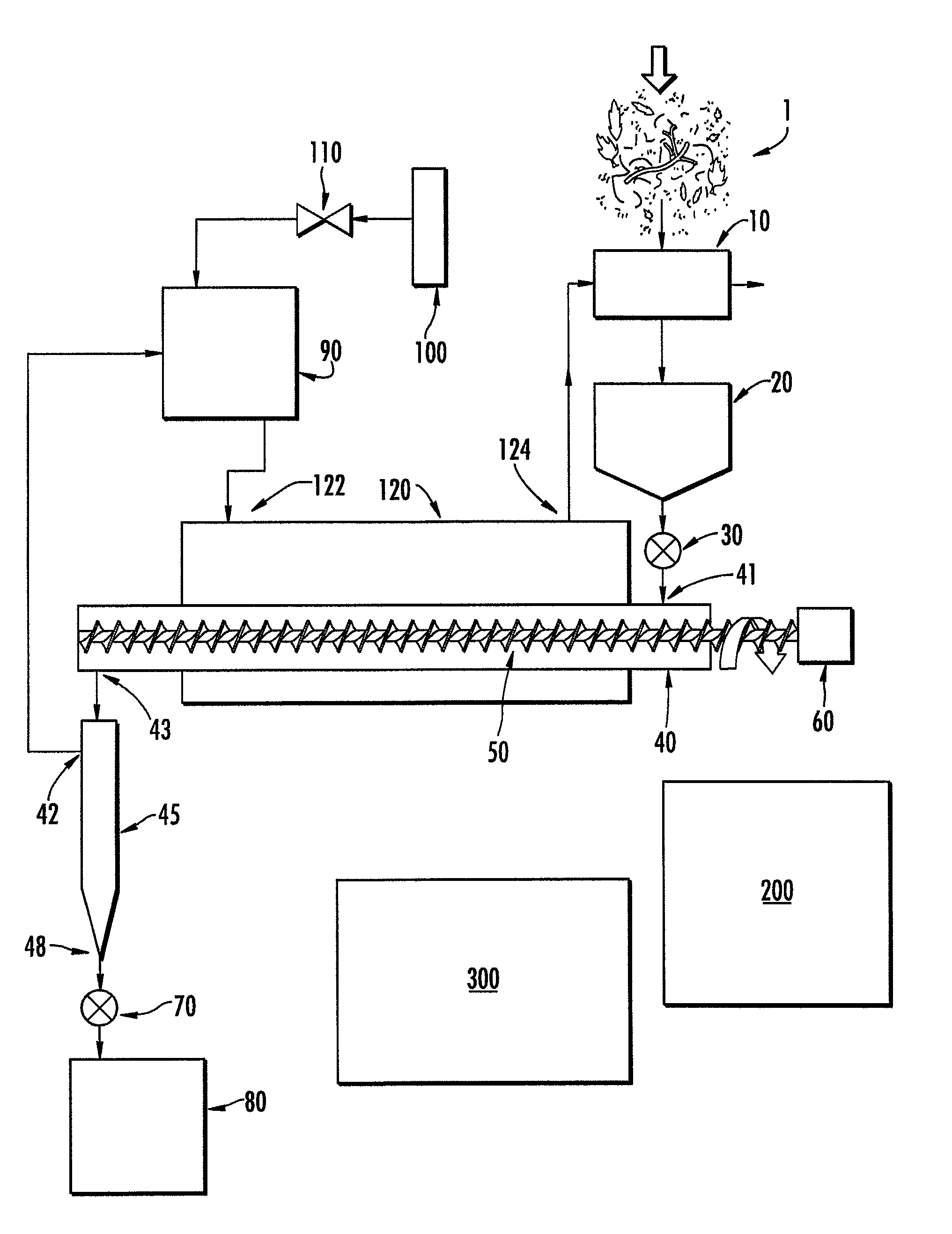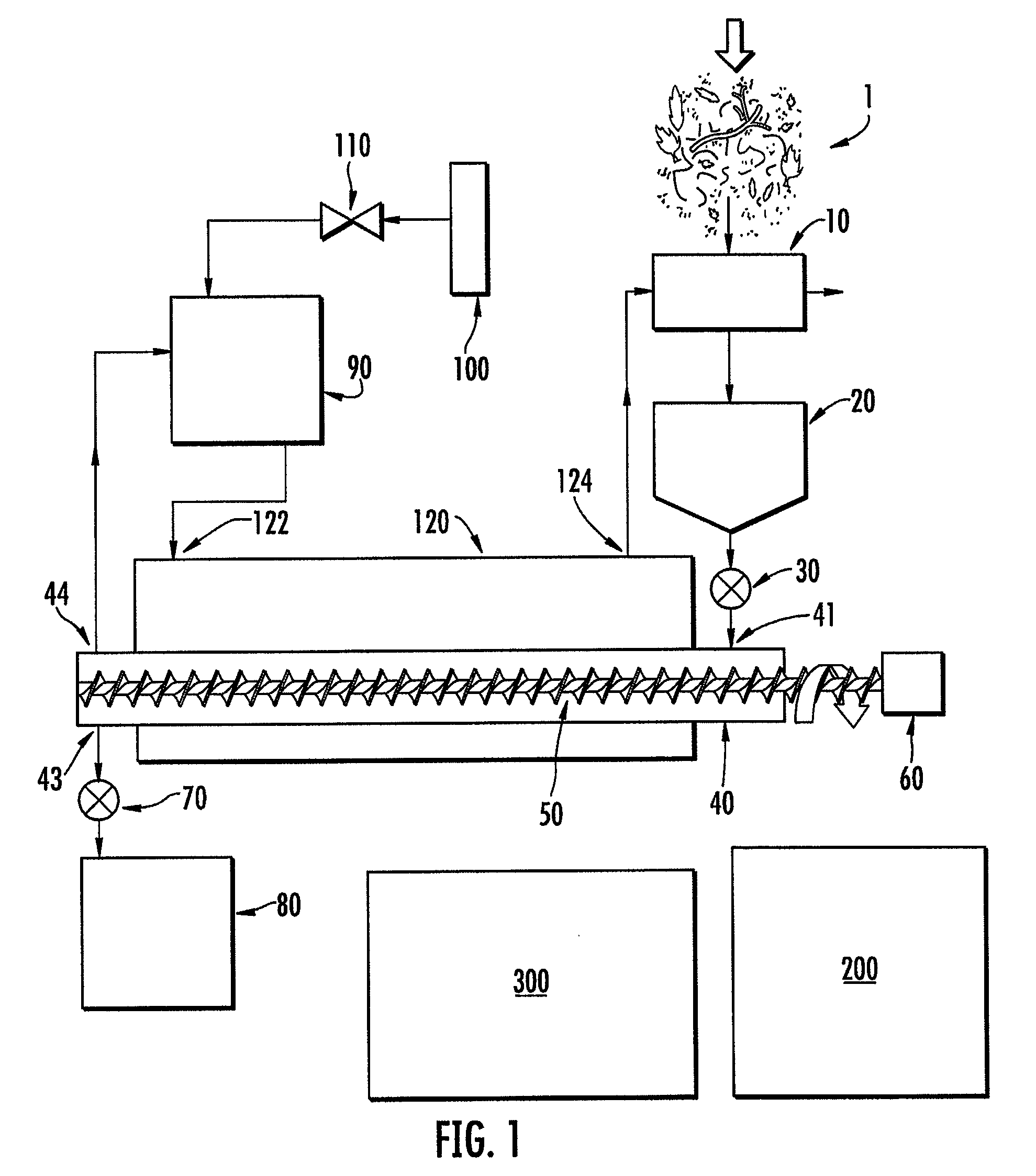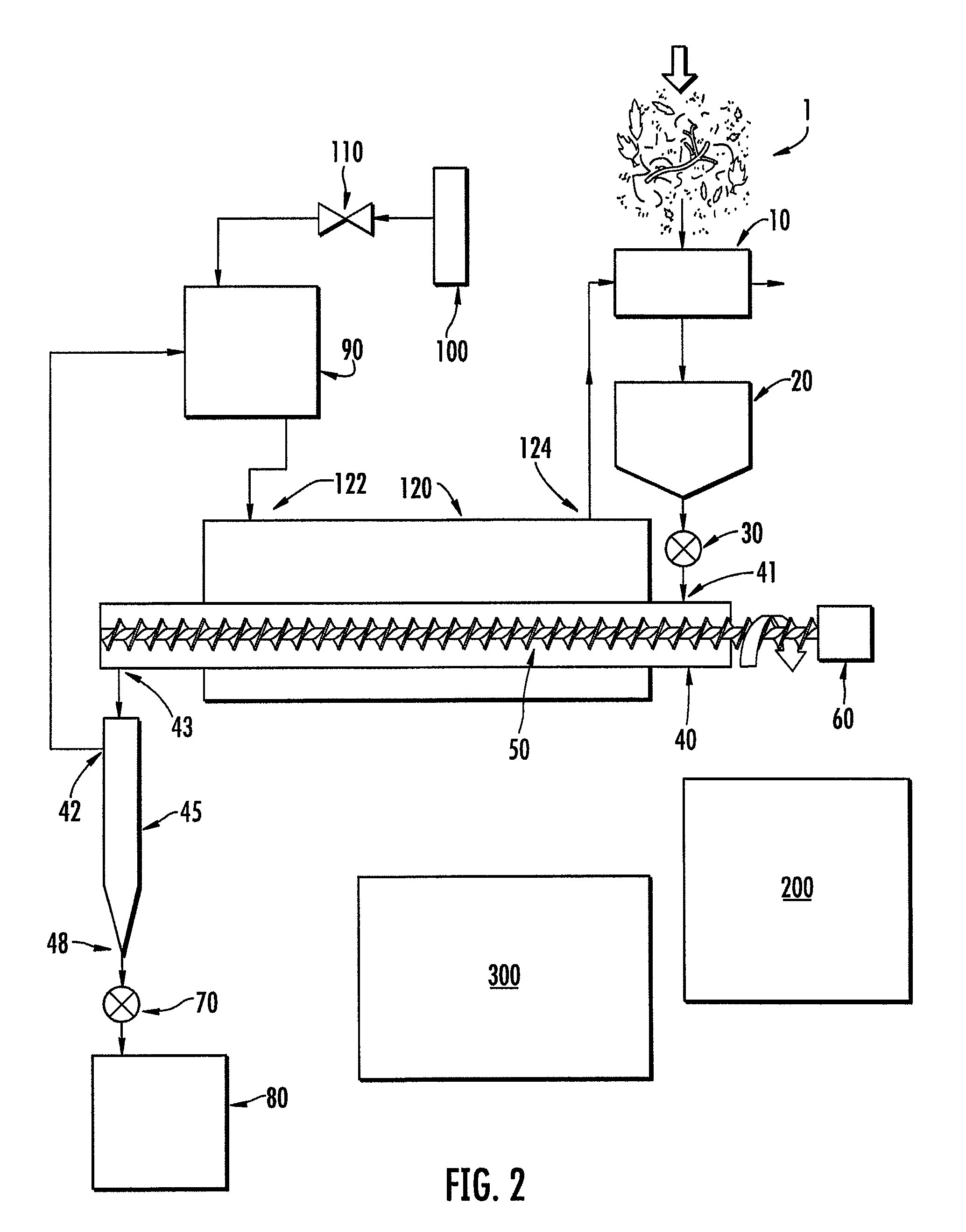Autothermal and mobile torrefaction devices
a torrefaction device and mobile technology, applied in the direction of horizontal chamber coke ovens, lighting and heating apparatus, separation processes, etc., can solve the problems of energy densification, more mass than energy lost to the gas phase, loss of mass and chemical energy into the gas phase, etc., to increase the cost effectiveness, reduce the cost of shipping feedstocks, and reduce the effect of cost per btu
- Summary
- Abstract
- Description
- Claims
- Application Information
AI Technical Summary
Benefits of technology
Problems solved by technology
Method used
Image
Examples
example
[0060]An autothermal torrefaction device according to one embodiment of the present invention was utilized for the torrefaction of pine logging residues (small diameter wood, bark, needles). The torrefaction device included 6 torrefaction chambers each having an overall length of 20 feet. The exterior housing or outer jacket surrounding the torrefaction chambers comprised a box having an internal width of 5 feet, an internal height of 5 feet and an internal length of 14 feet. As such, 14 feet of the 20 foot torrefaction chambers were surrounded by the outer jacket.
[0061]The biomass (i.e., the pine logging residues) was fed through a ½″ screen on a hammermill. The water content varied from particle to particle but the overall average water content was approximately 50% by weight. The ground biomass was conveyed in a trough to a feed hopper. While being conveyed in the trough to the feed hopper, hot exhaust gases were blown across the biomass in the trough as well as around the outsid...
PUM
| Property | Measurement | Unit |
|---|---|---|
| temperature | aaaaa | aaaaa |
| temperature | aaaaa | aaaaa |
| distance | aaaaa | aaaaa |
Abstract
Description
Claims
Application Information
 Login to View More
Login to View More - R&D
- Intellectual Property
- Life Sciences
- Materials
- Tech Scout
- Unparalleled Data Quality
- Higher Quality Content
- 60% Fewer Hallucinations
Browse by: Latest US Patents, China's latest patents, Technical Efficacy Thesaurus, Application Domain, Technology Topic, Popular Technical Reports.
© 2025 PatSnap. All rights reserved.Legal|Privacy policy|Modern Slavery Act Transparency Statement|Sitemap|About US| Contact US: help@patsnap.com



